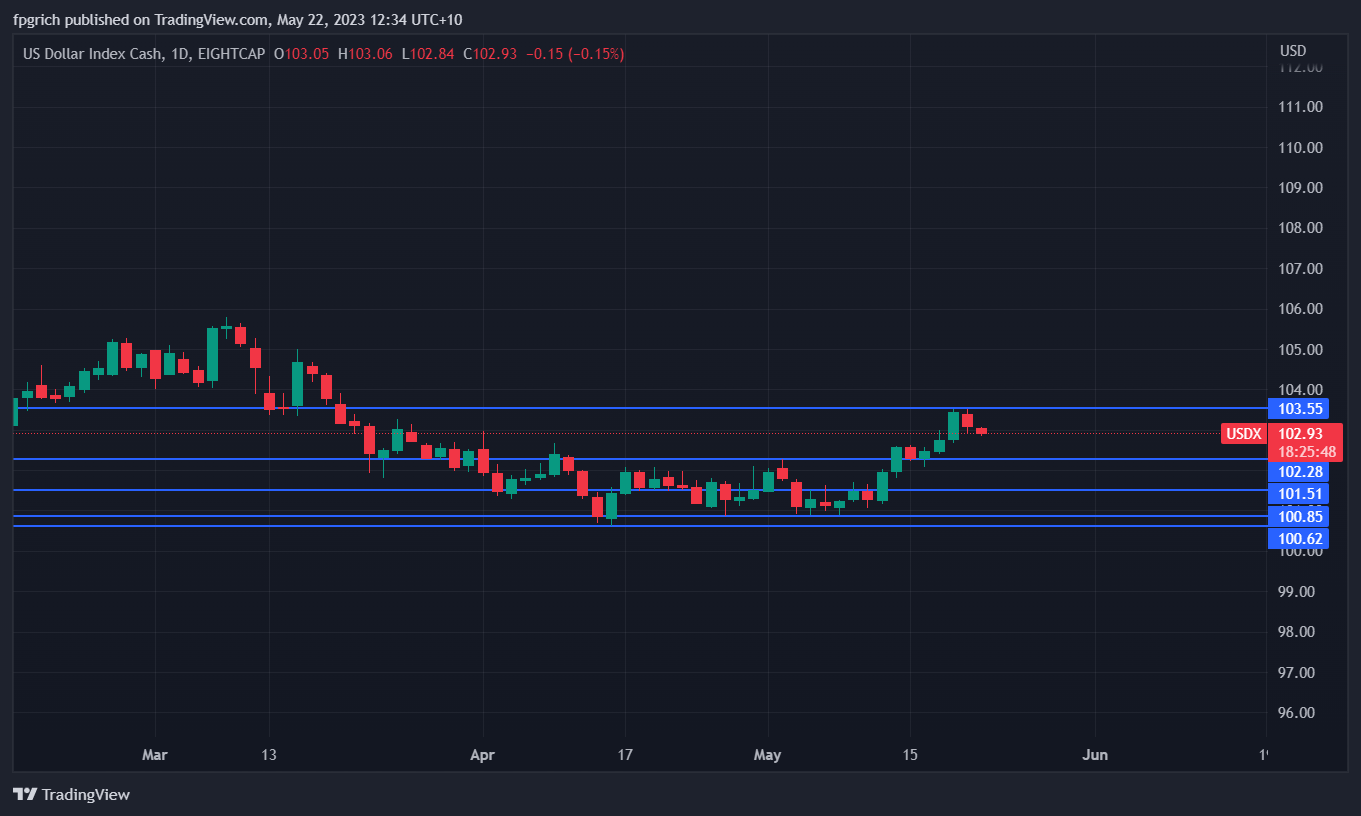The United States is currently facing a significant challenge with the debt ceiling, as Treasury Secretary Janet Yellen warns about the nation's ability to pay its bills. Yellen considers the debt ceiling to be a constraint that may result in hard choices regarding which bills will go unpaid. While obligations such as interest on outstanding debt, Social Security payments, military salaries, and payments to contractors would be prioritized, some bills may be left unpaid. Yellen emphasizes the urgent need to raise the debt ceiling, stating that unacceptable outcomes will occur if it isn't raised.
Negotiations between Congress and the White House have reached a stalemate, leading President Biden to cut short his international trip and resume in-person negotiations with Speaker Kevin McCarthy. Yellen mentions discussions about using the 14th Amendment to unilaterally raise the debt ceiling but deems it inappropriate and uncertain due to legal constraints and time limitations. It is crucial to address this issue promptly as being unable to pay bills is an unacceptable situation.
Yellen also highlights that it is unlikely the US will be able to pay all its bills by mid-June. The urgency to reach a deal with Republicans to raise the debt limit is underscored, and the odds of reaching June 15 while being able to pay all bills are considered quite low. House Speaker Kevin McCarthy expects to engage in discussions with President Joe Biden to prevent a debt default. Republicans are pushing for federal spending cuts as a condition for lifting the borrowing cap. Yellen mentions substantial tax payments due on June 15, but without a resolution, reaching that date becomes increasingly challenging.
The standoff over the debt ceiling adds strain to an already vulnerable US economy. The prospect of a US default looms, which could trigger a market selloff, increase borrowing costs, and have severe global economic repercussions. Yellen is expected to update Congress on the remaining time before running out of cash to pay bills. As of May 17, the Treasury Department has nearly depleted its authorized extraordinary measures, leaving only around $92 billion.
In response to the situation, President Biden emphasizes that he will not agree to a debt ceiling deal based solely on Republican terms. He highlights that raising the debt ceiling is the responsibility of Congress and should be approached in a bipartisan manner. Biden argues that Republican lawmakers should share the burden of ensuring the government's ability to pay its debts, as it is not a partisan issue. He stresses that raising the debt ceiling is crucial to avoid a potential economic crisis and protect the full faith and credit of the United States.
Negotiations between the Biden administration and congressional Republicans are ongoing, aiming to find a bipartisan agreement on the debt ceiling. President Biden expresses confidence in finding a solution and expects both parties to work together in the best interest of the country. He urges Congress to raise the debt limit promptly to prevent a potential economic disaster. Failure to do so could lead to severe consequences, including a default on U.S. obligations.
Market Outlook based on personal opinion:
The current debt ceiling standoff and the uncertainty surrounding it may have implications for the US dollar index and gold. If the debt ceiling issue remains unresolved and the US faces a potential default, it could create market volatility and diminish investor confidence in the US economy. This could potentially weaken the US dollar, as investors seek safer assets.
On the other hand, gold, often considered a safe-haven asset, could benefit from the market uncertainty caused by a debt ceiling standoff. Investors may turn to gold as a store of value and a hedge against potential economic turmoil. Increased demand for gold could drive its price higher in the market.
However, it is important to note that market reactions to geopolitical and economic events can be unpredictable. The situation surrounding the debt ceiling remains fluid, and the outcome of negotiations can significantly impact market dynamics. Investors should closely monitor developments and consider diversifying their portfolios to manage potential risks associated with the debt ceiling issue.
If we take a look at the above 1-day Gold chart, we can see that recently Gold has broken through the support line at 1969.22 and established a new support line at 1948.74. The subsequent red candle was quickly recovered by a green candle, and this price decline and rise are currently revolving around the discussion on the US debt ceiling. Depending on the outcome of the discussion, prices may experience significant volatility.
Currently, Gold is still in an upward trend, as indicated by the upward trend shown on the chart from October 2022 to the present day.
If we take a look at the above 1-day US Dollar Index chart, we can see that the price has recently broken through the resistance level at 102.28, despite two attempts, but has been unable to break through the new resistance level at 103.55. Currently, it can be assumed that the support level is around 102.28 or 101.51. Although the outcome of the debt ceiling discussion is still uncertain, the US Dollar Index has experienced a slight rebound, possibly due to strong consumer spending. However, consumer spending may no longer be a viable supporting factor as the recent retail sales data released by the United States shows a growth rate of 0.4%, which is lower than the previous month's 0.8%, indicating weak consumer spending.
Currently, the US Dollar Index is in a downtrend, with the trend spanning from September 2022 to the present day.
- English (USA)
- English (UK)
- English (India)
- English (Canada)
- English (South Africa)
- English (Philippines)
- English (Nigeria)
- Deutsch
- Español (España)
- Español (México)
- Français
- Italiano
- Nederlands
- Português (Portugal)
- Polski
- Português (Brasil)
- Русский
- Türkçe
- العربية
- Ελληνικά
- Svenska
- Suomi
- עברית
- 日本語
- 한국어
- 简体中文
- 繁體中文
- Bahasa Indonesia
- Bahasa Melayu
- ไทย
- Tiếng Việt
- हिंदी
Debt Ceiling Standoff: Urgency Grows as US Faces Impending Bill Payment Crisis
Published 22/05/2023, 01:49 pm
Debt Ceiling Standoff: Urgency Grows as US Faces Impending Bill Payment Crisis
Latest comments
Loading next article…
Install Our App
Risk Disclosure: Trading in financial instruments and/or cryptocurrencies involves high risks including the risk of losing some, or all, of your investment amount, and may not be suitable for all investors. Prices of cryptocurrencies are extremely volatile and may be affected by external factors such as financial, regulatory or political events. Trading on margin increases the financial risks.
Before deciding to trade in financial instrument or cryptocurrencies you should be fully informed of the risks and costs associated with trading the financial markets, carefully consider your investment objectives, level of experience, and risk appetite, and seek professional advice where needed.
Fusion Media would like to remind you that the data contained in this website is not necessarily real-time nor accurate. The data and prices on the website are not necessarily provided by any market or exchange, but may be provided by market makers, and so prices may not be accurate and may differ from the actual price at any given market, meaning prices are indicative and not appropriate for trading purposes. Fusion Media and any provider of the data contained in this website will not accept liability for any loss or damage as a result of your trading, or your reliance on the information contained within this website.
It is prohibited to use, store, reproduce, display, modify, transmit or distribute the data contained in this website without the explicit prior written permission of Fusion Media and/or the data provider. All intellectual property rights are reserved by the providers and/or the exchange providing the data contained in this website.
Fusion Media may be compensated by the advertisers that appear on the website, based on your interaction with the advertisements or advertisers.
Before deciding to trade in financial instrument or cryptocurrencies you should be fully informed of the risks and costs associated with trading the financial markets, carefully consider your investment objectives, level of experience, and risk appetite, and seek professional advice where needed.
Fusion Media would like to remind you that the data contained in this website is not necessarily real-time nor accurate. The data and prices on the website are not necessarily provided by any market or exchange, but may be provided by market makers, and so prices may not be accurate and may differ from the actual price at any given market, meaning prices are indicative and not appropriate for trading purposes. Fusion Media and any provider of the data contained in this website will not accept liability for any loss or damage as a result of your trading, or your reliance on the information contained within this website.
It is prohibited to use, store, reproduce, display, modify, transmit or distribute the data contained in this website without the explicit prior written permission of Fusion Media and/or the data provider. All intellectual property rights are reserved by the providers and/or the exchange providing the data contained in this website.
Fusion Media may be compensated by the advertisers that appear on the website, based on your interaction with the advertisements or advertisers.
© 2007-2025 - Fusion Media Limited. All Rights Reserved.
